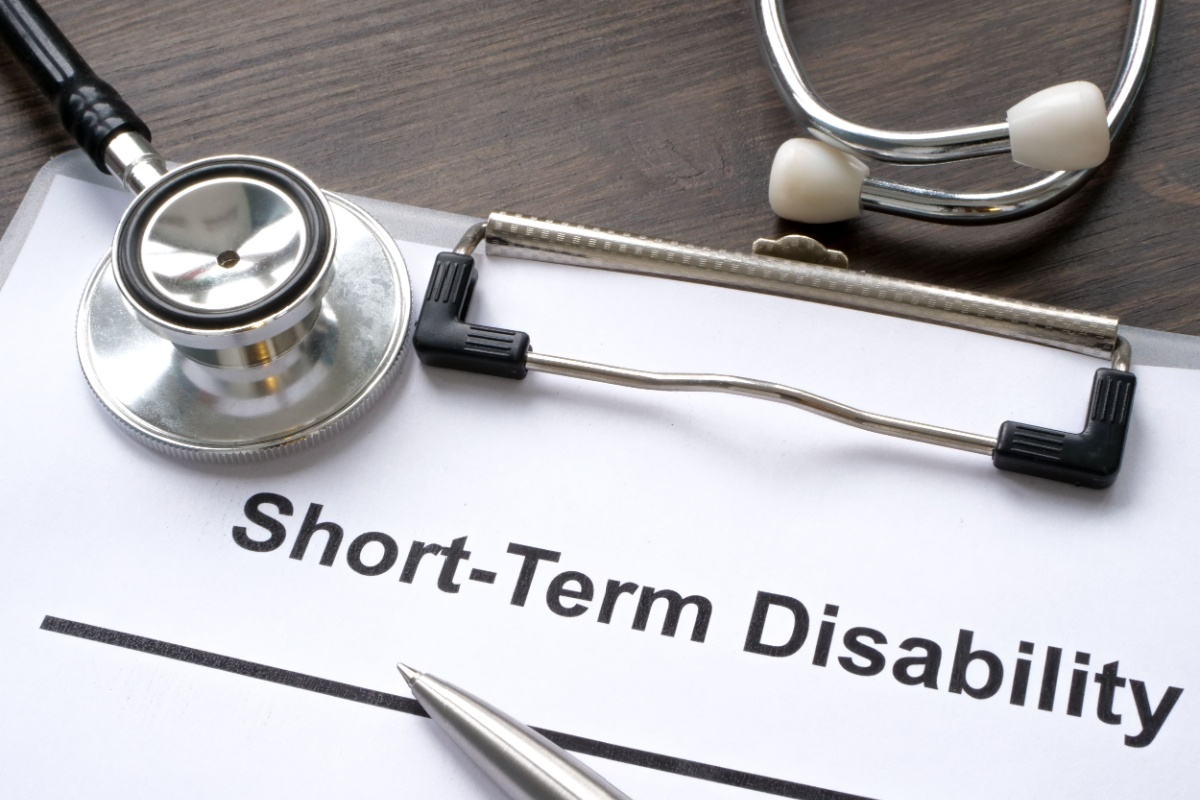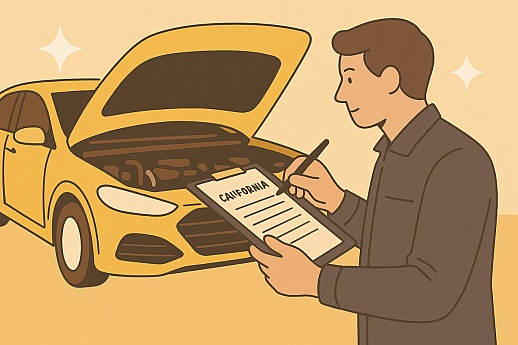How Short-Term Disability Insurance Can Help You Stay Financially Stable
You fracture your wrist slipping on a wet stair, face a sudden flare-up of a chronic condition, or need a minor surgery that takes you out of work for a few weeks. You're sidelined — unable to work, with no paycheck coming in. As the family’s provider or a self-employed professional, the pressure mounts instantly.
Expenses don’t take sick days. When life throws you off course without warning, short-term disability insurance becomes your safety net. It helps replace your income, so even when you’re down, your finances don’t fall with you.
What Qualifies for Short-Term Disability?
A short-term disability is a temporary condition that prevents you from working and earning income. For example, you may experience short-term disability due to a serious illness that lowers your physical strength, concentration, or stamina. Some common conditions include cancer, arthritis, or cardiovascular events like a stroke or heart attack.
Injuries from accidents are also a frequent cause. These may involve broken bones, torn ligaments, back injuries, or head trauma that limits your movement or ability to carry out physical tasks. In other cases, you might need time off after childbirth or surgery that requires recovery and rehabilitation before returning to your regular work routine.

Mental health conditions can qualify, too. If you're experiencing severe anxiety, depression, or stress-related disorders, they may interfere with your job performance until treatment helps restore stability.
Data from the Council for Disability Income Awareness reports the following as common reasons for short-term disability insurance claims:
- Musculoskeletal disorders (17%)
- Digestive disorders (7%)
- Pregnancy (22%)
- Mental health issues (11%)
- Fractures, sprains, and muscle strains (11%)
Keep in mind that illnesses or injuries that occur at work or because of your job typically aren’t covered by short-term disability insurance. These are usually handled by workers’ compensation, which all states, except Texas, require employers to provide.
Also, most short-term disability insurance policies don’t cover preexisting conditions. Disabilities linked to medical issues you had before getting coverage may not be eligible.
What Is Short-Term Disability Insurance?
Short-term disability insurance provides cash benefits to employees or workers who can’t work for a short period of time due to non-work-related illnesses or injuries. It helps replace a portion of their lost wages during the recovery period.
A short-term disability policy differs from a life insurance policy. While short-term disability pays income benefits while you're alive but unable to work, a life insurance policy provides a lump-sum payout to your beneficiaries after your death.
Unexpected illness or injury can happen to anyone. In fact, over 25% of today’s 20-year-olds are expected to become disabled before retirement age. With a reported 68.4% of Americans currently living paycheck to paycheck, missing a few pay periods can cause serious financial strain for you and your loved ones.

Short-term disability insurance helps you maintain financial stability. With benefits you can use like a paycheck — for essentials like housing, food, bills, and childcare — you avoid dipping into your savings or taking on debt.
While short-term disability insurance policies have various terms and provisions, they typically share these common features:
Premium and Elimination Period
The premium is the monthly amount you or your employer pays for coverage. Costs vary based on your age, job, and chosen benefits. On average, you can expect to pay about 1% to 3% of your annual salary. For instance, if you earn $50,000 a year, your premiums may range from $500 to $1,500 annually.
Meanwhile, the elimination period, also known as the waiting period, is the time between the start of your disability and when you begin receiving benefits. A 14-day waiting period is typical, but it can range from as short as seven days to as long as 60 days. During this time, you might need to use vacation or sick leave to maintain your income until benefits begin.
Benefit Amount and Coverage Length
The amount you can receive monthly or weekly from short-term disability insurance depends on your specific policy, but it generally covers between 40% and 70% of your salary. Your earnings at the time you become disabled are typically used to calculate how much you’ll get.
If you’re in California, the weekly benefit amount (WBA) is based on your quarterly income. If your quarterly income is between $722.50 and $15,506.40, your WBA will be 90% of your weekly wages. The WBA for a quarterly income of $15,506.41 to $19,936.80 is fixed at $1,074 per week. For quarterly earnings above $19,936.80, you’ll receive 70% of your weekly wages, up to a maximum of $1,681.
The duration of short-term disability benefits also varies. Most policies provide coverage for about three to six months, but some may go up to a year or longer.
How Does Short-Term Disability Insurance Work?
Short-term disability insurance offers income replacement when you’re unable to work temporarily due to a qualifying medical condition. It’s designed to help you manage expenses while recovering from an illness, injury, or medical procedure that keeps you off the job for a limited time.
Although the details can differ between policies, most short-term disability plans follow a similar process. Here’s how a traditional short-term disability insurance policy typically works.
If you experience a temporary health condition that prevents you from working, you file a claim with your insurance provider. Once your claim is approved, you may begin receiving payments, taking into account the elimination period.
Payments continue until you either recover and return to work or reach your policy’s maximum benefit duration. Once you're medically cleared, you can resume your role and stop receiving benefits.
In addition to a standard employer-provided coverage, short-term disability insurance is available in different plan types:
- Shared-Cost (Contributory) Plans: Both you and your employer pay toward the premiums, helping reduce costs while allowing you to invest in your own protection.
- Base Plus Upgrade (Core Buy-Up) Plans: Employers offer basic coverage at no cost, but you can purchase extra coverage if you want greater protection.
- Employee-Funded (Voluntary) Plans: You take full responsibility for paying premiums, and the cost is based on the plan and provider you choose.
How to Apply for Short-Term Disability
You should review your policy’s requirements before filing a short-term disability insurance claim. If your coverage is part of a group plan through your employer, you typically qualify automatically without underwriting.
However, you must still provide medical documentation showing that your condition meets the policy’s definition of disability. This usually involves having a licensed healthcare provider evaluate your condition and complete a form confirming your inability to work.

For short-term disability insurance not through an employer, you’ll need to purchase a policy independently, often through a broker or agent. These policies usually require underwriting, meaning the insurer will assess your health history, age, and any preexisting conditions before approving coverage.
Once you’re insured, the claim process also involves submitting proof of disability from a qualified medical professional.
Top Three Recommended Short-Term Disability Insurance Providers
Now, let’s take a closer look at some of the best companies offering short-term disability insurance coverage. These trusted providers can help bridge the financial gap when life takes an unexpected turn:
State Farm
State Farm stands out as one of the few insurance companies offering short-term disability benefit periods lasting up to three years. You could receive between $300 and $3,000 per month, depending on your job and income.
The average monthly premium ranges from $10 to $40, with elimination periods ranging from 30 to 90 days. Their policies are available in 47 states, but not sold in Massachusetts, New Jersey, or Rhode Island.
Many find State Farm’s application process more straightforward than other providers, mainly because no medical exam is needed. State Farm also holds an A++ financial strength rating, which is the highest possible.
However, coverage is limited for mental and nervous disorders, and complications from cosmetic procedures aren't included. Still, if you're looking for a simple way to protect your income for the short term, this could be a practical option.
Mutual of Omaha
With over 100 years of experience, Mutual of Omaha remains a familiar name in short-term disability insurance. Based on your income, monthly benefits range from $300 to $20,000. The $20,000 maximum applies only to individual disability income policies, not group short-term disability plans. Premiums cost between $10 and $60, and elimination periods are typically up to 90 days.
To apply, you’ll need to speak with an agent, which will help you understand what coverage suits your needs. The policy includes automatic benefit increases and Social Security supplementation. If you’re self-employed, you may qualify for a 15% discount, making it a more affordable option while offering broad coverage flexibility.
Northwestern Mutual
With Northwestern Mutual’s short-term disability insurance, you may receive between 50% and 100% of your income, depending on your chosen plan. Benefits usually last several weeks to a few months. Depending on your policy, the waiting period can be as short as a few days after a qualifying event.
With 97% of policyholders renewing yearly, the company is known for consistent service and strong client loyalty.
Final Thoughts
Short-term disability insurance helps protect your income when you can’t work due to a temporary injury, illness, or condition. It provides a steady stream of income to help you cover essential expenses while you recover.
If you’re the breadwinner, self-employed, or don’t have much in savings, this coverage can make a big difference, giving you financial stability and peace of mind when you need it most.
FAQs
Gain deeper insights with the following answers to some of the most commonly asked questions about short-term disability insurance:
How Long Is Short-Term Disability?
Short-term disability coverage usually lasts three to six months, though the exact length depends on your medical condition and your employer’s specific policy. For instance, standard plans often allow about six to eight weeks for recovery after surgery or childbirth. More severe illnesses or injuries may qualify for extended coverage periods.
Who Pays Health Insurance While on Short-Term Disability?
While on short-term disability, your employer is not legally required to continue paying for your health insurance unless your leave qualifies under the Family and Medical Leave Act (FMLA).
Under FMLA, if you work for a covered employer (50+ employees) and meet eligibility requirements, your employer must continue your group health coverage for up to 12 weeks under the same terms as if you were actively working.
If your leave doesn’t qualify, coverage continuation depends entirely on your employer’s internal benefits policy or any applicable state-specific leave laws. In cases where coverage isn’t continued, you may need to pay the full premium to maintain your health insurance, or you can explore health insurance quotes to compare temporary coverage options during your leave.
Does Short-Term Disability Protect Your Job?
Short-term disability insurance on its own doesn’t provide job protection. However, when combined with the FMLA, employees may receive income support and job security. FMLA guarantees eligible employees can return to the same or a similar role after their leave. As a result, many employers coordinate short-term disability benefits with FMLA coverage to provide a more comprehensive safety net during medical absences.



